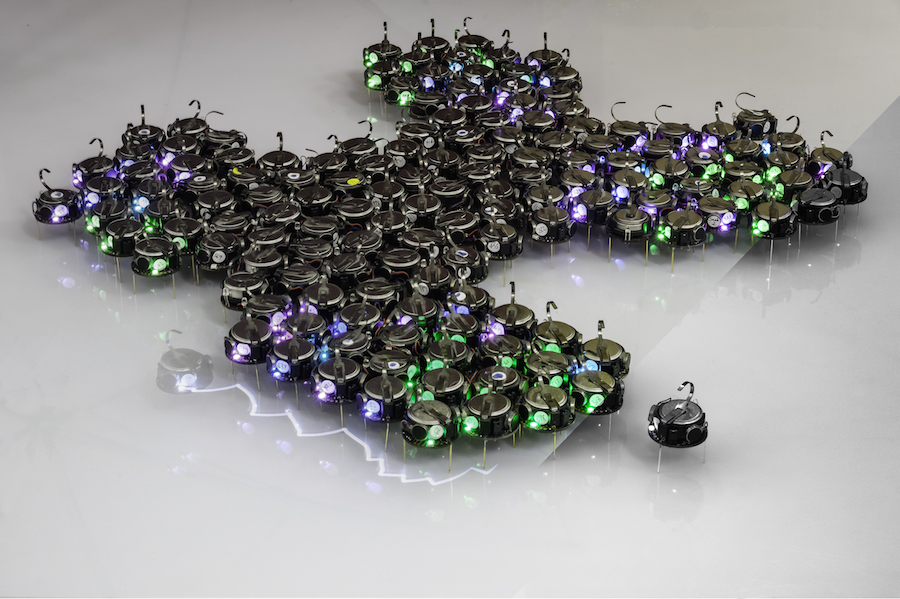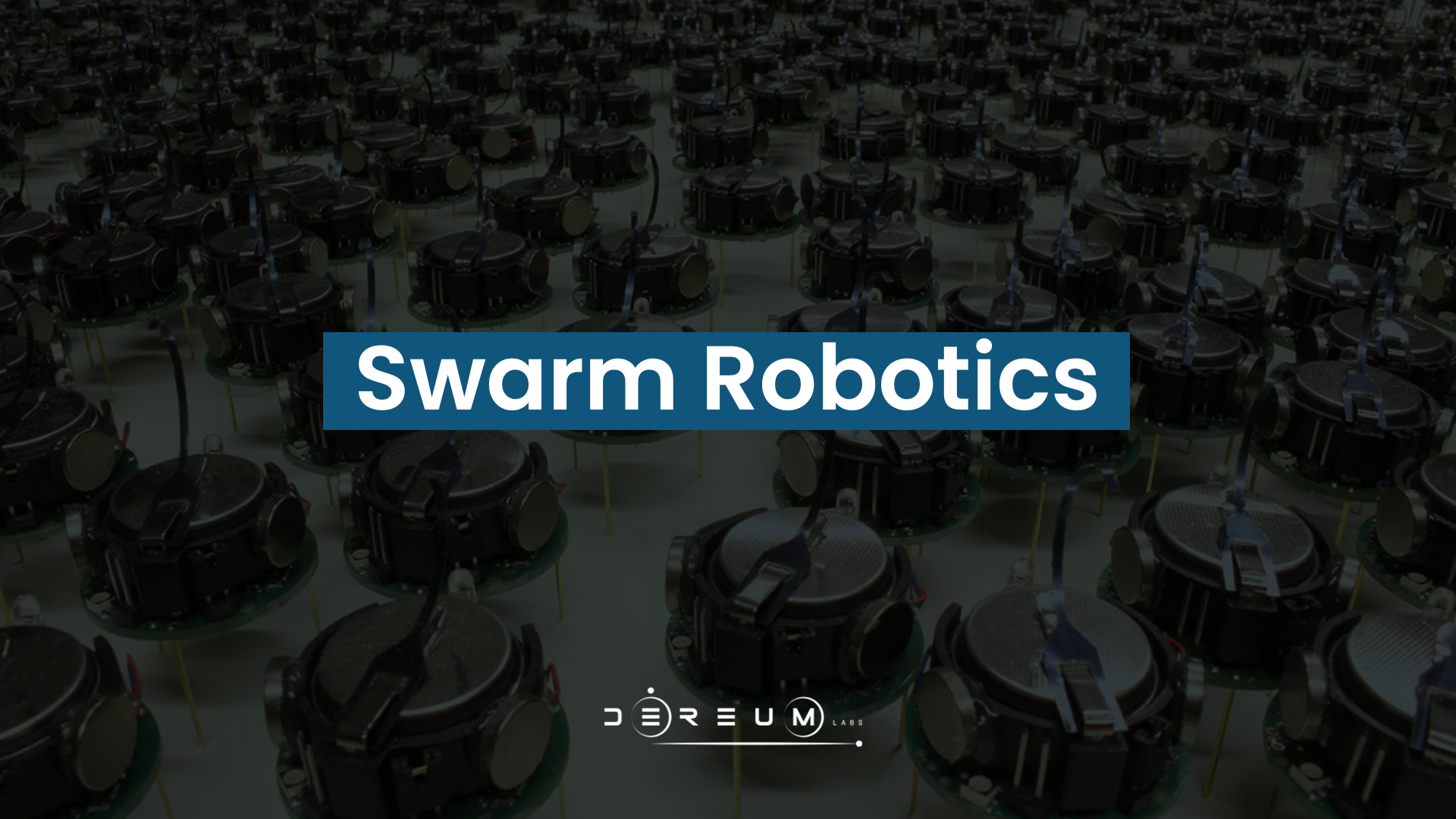Collective behaviors enable animals like ants to achieve remarkable, colony-level feats through the distributed actions of millions of independent agents. These collective behaviors are inspiring engineers to build simple mobile robots that harness the demonstrated power of the swarm, performing collective tasks like transporting large objects or autonomously building human-scale structures.
Today, most robots are designed to work by themselves, not as part of a team. Researchers from different institutes are developing robotic systems and algorithmic approaches to make artificial swarms of robots that collaboratively work together towards a common goal. In one licensed application of the technology, a collective of 1024 “Kilobots” (meaning “one thousand robots”) can be programmed to exhibit complex swarming behaviors, such as foraging and firefly-inspired synchronization, while a user can interact with the swarm as a whole (programming the robots, switching them on and off, etc.), no matter how many robots there are. Kilobot-inspired underwater swarming robots that use a novel vision system to coordinate movement like schools of fish are also being developed. The Kilobot technology has been licensed to K-Team Corporation for research and educational applications as a platform for collective swarm algorithms in hardware rather than merely computer simulations.

Beyond this, a hive “operating system” could let a user program colonies of robots to perform complex tasks in natural environments such as land, air, and sea. Flying microrobots could be instructed to pollinate a field, or — inspired by mound-building termites — an autonomous robot construction team could be programmed to build 3D structures and traversable surfaces, to stack sandbags along vulnerable coastlines before a hurricane, or to lay out barriers around toxic chemical spills. Towards these goals, researchers have developed cutting-edge sensor technology, micro-actuators, and robust controllers allowing the robots to adapt quickly to changing conditions.
Source: Wyss Institute
We recommend you: What is the ARTEMIS program?

